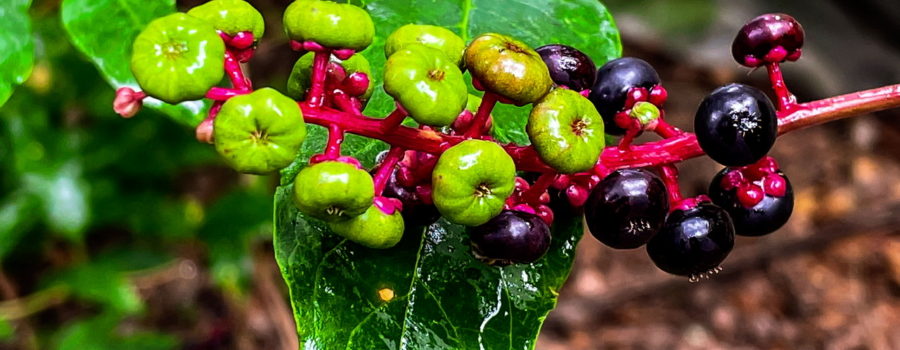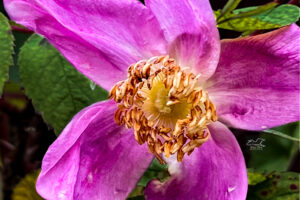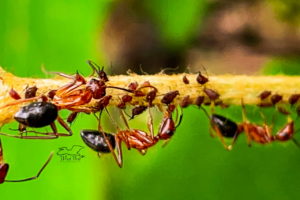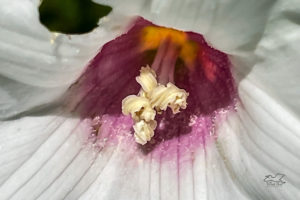American Pokeweed is Highly Toxic but Incredibly Useful

There is a plant that grows all over the place down here that has quite the interesting history, especially in the south. That plant is the American pokeweed (Phytolacca americana), also known as pokeberry, poke root, pigeon berry, or ink berry. It can be found in most of North America except for the midwest. It has also been naturalized in quite a bit of Europe. It is a perennial herb that can grow anywhere from 3-4 feet tall to almost 20 feet (although that is exceptional. Most don’t get much higher than 8 feet tall). It grows via a large taproot that can send off one or more stems depend on it’s age. Each winter the foliage will die back, but the taproot will survive and send up fresh stems after the last freeze. It spreads by means of it’s seeds that are contained in it’s purple to black berries. Although they look a lot like elderberries and summer grapes, you definitely don’t want to eat these berries since they are very toxic to people, pets, and livestock.

Not only are the pokeweed berries toxic, but so are the leaves, shoots, and particularly the root. Despite the fact that this plant is poisonous, in the southern and Appalachian areas of the United States it is often eaten. The new shoots and leaves that first appear in the spring are less toxic than more mature foliage, and they can be collected and used in a “salad” called poke sallet. The shoots and leaves are boiled in at least two changes of water, then fried in bacon fat and served with bacon and sometimes other vegetables. The leaves supposedly taste similar to spinach while the shoots resemble asparagus. I personally have never tried it, and honestly have no desire to for several reasons, not the least of which is that if not prepared properly it can kill you! In people, pets, and livestock signs of intoxication include vomiting, stomach cramps, diarrhea, anemia, unconsciousness, seizures, and ultimately with a high enough dose, death. Fortunately, the same chemicals that make this plant toxic also make it very bitter, so it is rarely eaten by pets or livestock. The main source of poisonings are the berries which may be eaten unwittingly by children or by adults after misidentification.

Even though this plant is toxic to some species, it is a great source of food for many types of wildlife. Deer will graze on new leaves and shoots during the spring. In the summer, hummingbirds, bats, and some types of butterflies feed on the flower nectar. The leaves also provide food for several types of moth caterpillars, especially those of giant leopard moths. In the fall, the berries are eaten by many different types of birds. These include cardinals, cedar waxwings, mockingbirds, quail, wild turkeys, mourning doves and their smaller cousins ground doves, brown thrashers, American crows, woodpeckers, and many more. Quite a few small mammals also use these berries as a food source. These include but are not limited to wild mice and rats, foxes, raccoons, and opossums (which are actually marsupials, not mammals). All of these wild animals feeding on the berries is the main way that pokeweed gets spread. The seeds inside the berries are very hard and easily survive the digestive process and are passed as the animal travels around. In fact, the seeds are so tough that they can survive in the soil for up to forty years!

Even though most people choose not to eat pokeweed, that doesn’t mean that there aren’t other uses for it. The berries, when squeezed, will produce a dark red to almost black juice that was sometimes used to color wines in the mid nineteenth century. The juice was also used to dye cloth and was very commonly used as ink. If you have ever had the opportunity to see Civil War era documents that are written in brown ink (it fades to brown with age), it is most likely to be pokeweed ink (hence the common name of ink weed). In earlier times, pokeweed was used medicinally to treat any number of health conditions from skin diseases to arthritis. Some of these “medicinal” treatments were undoubtedly responsible for cases of pokeweed poisoning. In modern times, pokeweed has been studied as a treatment for certain types of cancers. Pokeweed extracts have been successfully used to treat some types of tumors in laboratory mice. Even though pokeweed is very rarely used in North America as a decorative plant, it is commonly used in gardens in Europe, mainly for it’s beautiful racemes of flowers and later berries. As you can see, even though this plant is often seen as an unwanted weed, and it is not exactly what everyone wants to eat as a salad, it’s still an extremely useful plant.

If you like beautiful nature photography and artwork along with interesting and engaging content then you should subscribe to our blog. Sign up below and enjoy!





Recent Comments